PCOS is characterized by the appearance of multiple cystic ovaries in ultrasound and the abnormal functioning of the ovaries. In a natural, regular menstrual cycle, a woman's ovaries produce one follicle each month, in which an egg cell is located and matures.
The disorder is characterized by the occurrence of anovulatory cycles (which causes the inability to get pregnant) and the overproduction of male sex hormones – androgens, which cause changes in a woman's body. Insulin resistance is a problem that often accompanies PCOS and can worsen the course of the disease by increasing the production of androgens.
Untreated PCOS may lead to numerous complications related to the occurrence of metabolic disorders in the form of carbohydrate and lipid imbalances. Developing polycystic ovary syndrome increases the risk of developing type II diabetes, cardiovascular diseases (including strokes and heart attacks), metabolic syndrome, and endometrial cancer.

Coexistence of symptoms such as menstrual disorders – frequent or infrequent periods![]() (at intervals of less than 21 or more than 35 days), sudden cessation of menstruation
(at intervals of less than 21 or more than 35 days), sudden cessation of menstruation![]() in premenopausal age – secondary amenorrhea
in premenopausal age – secondary amenorrhea![]() , hirsutism
, hirsutism![]() (excessive hair in places typical for men on the body – facial area, nipples, groin, back), acne
(excessive hair in places typical for men on the body – facial area, nipples, groin, back), acne![]() , oily skin and hair, female pattern baldness
, oily skin and hair, female pattern baldness![]() (androgenetic alopecia) should prompt diagnosis of PCOS. Some women with polycystic ovary syndrome experience weight gain as a result of insulin resistance
(androgenetic alopecia) should prompt diagnosis of PCOS. Some women with polycystic ovary syndrome experience weight gain as a result of insulin resistance![]() .
.
The syndrome may cause infertility in approximately half of affected women due to absent or infrequent ovulation. Some patients may experience mental health disorders – most often depression and anxiety disorders.
Women all over the world suffer from PCOS![]() , regardless of their nationality, lifestyle, or number of births. It should be emphasized that this disorder concerns not only reproductive issues but also metabolic and psychological ones. Polycystic ovary syndrome is a severe disease that is responsible for a significant number of premature miscarriages.
, regardless of their nationality, lifestyle, or number of births. It should be emphasized that this disorder concerns not only reproductive issues but also metabolic and psychological ones. Polycystic ovary syndrome is a severe disease that is responsible for a significant number of premature miscarriages.
The symptoms of PCOS can be very different and have different severity, depending on the degree of hormonal disorders in a given woman. Therefore, they require thorough diagnostics and correct diagnosis. Even little girls can suffer from PCOS (manifestations include premature puberty and menstrual disorders).
To sum up, polycystic ovary syndrome symptoms![]() include:
include:
The above symptoms may vary in severity and appear simultaneously or at intervals. Fertility problems, irregular periods, and excessive hair growth are absolute indications for immediate consultation with a doctor.
The symptoms of PCOS are non-specific, so if the disease is suspected, diagnosis is required to exclude other disorders causing similar symptoms. Initially, the gynecologist talks to the patient about the signs, examines her in the gynecological chair and performs additional tests. Currently, the so-called Rotterdam criteria![]() . To be diagnosed with PCOS, 2 of 3 criteria must be met:
. To be diagnosed with PCOS, 2 of 3 criteria must be met:
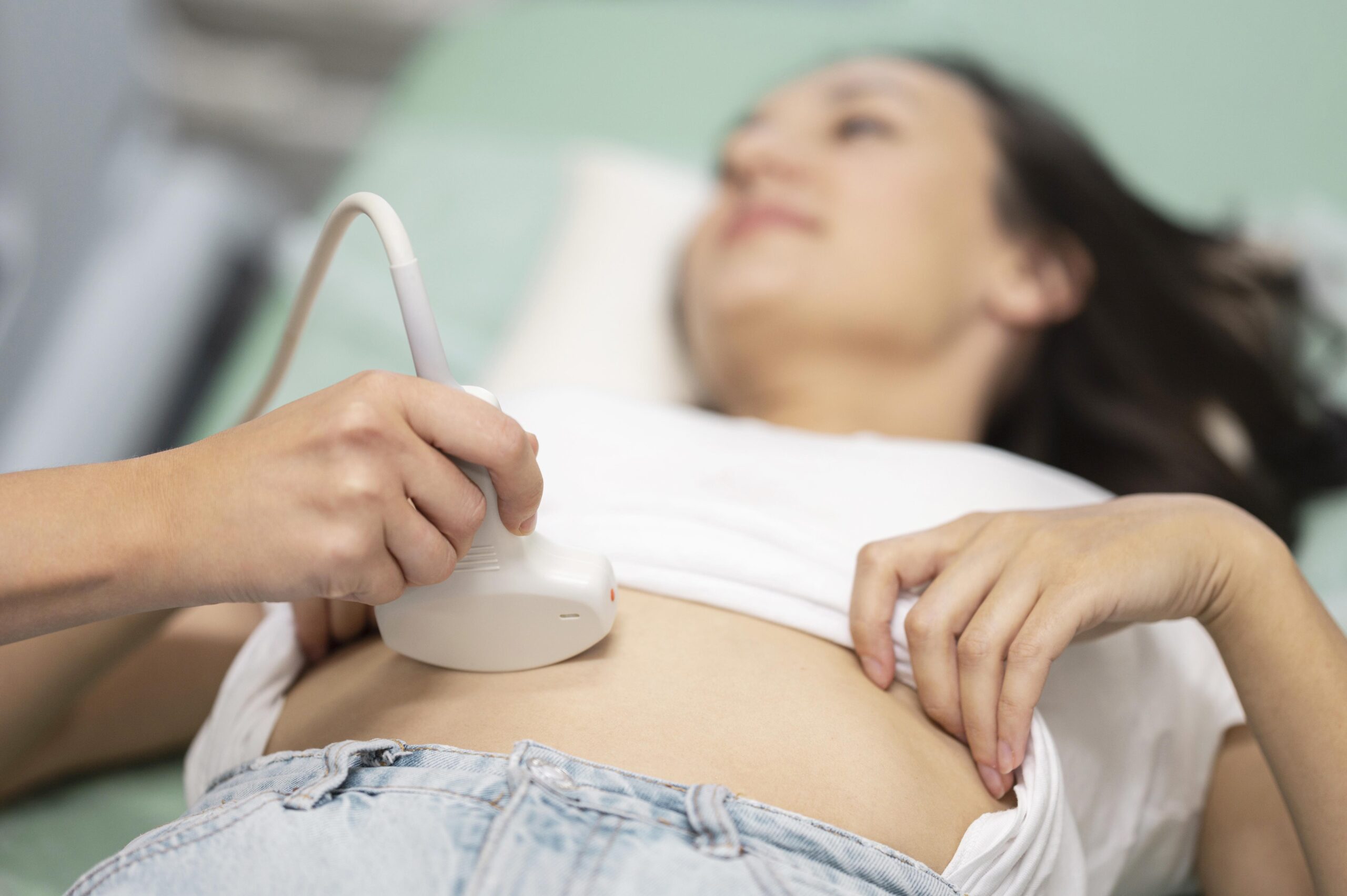
Transvaginal ultrasound![]() is the imaging method of choice in the diagnosis of polycystic ovaries. During the examination, the doctor examines the ovaries.
is the imaging method of choice in the diagnosis of polycystic ovaries. During the examination, the doctor examines the ovaries.
All hormonal tests![]() should be performed in the first phase of the cycle, between the 3rd and 5th day from the first day of menstruation. They include measuring the concentration of testosterone, SHBG (sex hormone binding protein), androstenedione and dehydroepiandrosterone (DHEA-S), and gonadotropins – luteinizing hormone (LH) and follicle-stimulating hormone (FSH). Determining whether a woman is ovulatory is possible by measuring the progesterone concentration in the second phase of the cycle.
should be performed in the first phase of the cycle, between the 3rd and 5th day from the first day of menstruation. They include measuring the concentration of testosterone, SHBG (sex hormone binding protein), androstenedione and dehydroepiandrosterone (DHEA-S), and gonadotropins – luteinizing hormone (LH) and follicle-stimulating hormone (FSH). Determining whether a woman is ovulatory is possible by measuring the progesterone concentration in the second phase of the cycle.
Additional tests include the OGTT test![]() , which involves measuring fasting glucose levels and then 2 hours after consuming 75 g of glucose solution, which allows for the assessment of carbohydrate metabolism.
, which involves measuring fasting glucose levels and then 2 hours after consuming 75 g of glucose solution, which allows for the assessment of carbohydrate metabolism.
It is always necessary to exclude other hormonal disorders: Cushing's syndrome, thyroid diseases, congenital adrenal hyperplasia (CAH), hyperprolactinemia, acromegaly, and the presence of tumors secreting male sex hormones.
In obese people, treatment of PCOS![]() should begin with lifestyle modifications
should begin with lifestyle modifications![]() : weight loss through diet changes, unhealthy eating habits, and regular physical activity at least 3-4 times a week. It is advisable to follow a diet based on products with a low glycemic index and plan regular meals rich in vegetables and fruit.
: weight loss through diet changes, unhealthy eating habits, and regular physical activity at least 3-4 times a week. It is advisable to follow a diet based on products with a low glycemic index and plan regular meals rich in vegetables and fruit.
If such treatment is ineffective, it is necessary to switch to pharmacological therapy, which is selected depending on the patient's desired effect.
Women who do not plan to get pregnant shortly are offered dual-component contraceptive pills![]() to reduce symptoms and the risk of complications. Sometimes, antiandrogens alone are used, eliminating the symptoms of increased androgen concentration in the blood. Still, such therapy is only possible if the patient is protected against pregnancy – these drugs may hurt the fetus.
to reduce symptoms and the risk of complications. Sometimes, antiandrogens alone are used, eliminating the symptoms of increased androgen concentration in the blood. Still, such therapy is only possible if the patient is protected against pregnancy – these drugs may hurt the fetus.
In the case of infertility treatment, the main goal is the return of ovulatory cycles. Among the drugs currently used, c********e citrate is the most commonly used. If the therapy is ineffective, ovulation induction using gonadotropins, followed by in vitro fertilization, is considered.
Polycystic ovary syndrome is a disease where only the symptoms can be prevented. Stopping treatment usually causes the symptoms to recur. In the case of infertility caused by hormonal disorders as a result of PCOS, the probability of success in the form of getting pregnant and giving birth to a child after changing the lifestyle and using appropriate therapy is relatively high.
If PCOS is diagnosed, treatment must be initiated. Hormonal disorders resulting from the disease lead to many complications![]() , including:
, including:
Due to ovulation disorders occurring in polycystic ovary syndrome, women have problems getting pregnant![]() . This aspect is the most common reason why a woman of reproductive age visits a doctor and undergoes diagnostic tests to confirm or exclude PCOS. Quick implementation of PCOS treatment is a chance for women of reproductive age to have a child.
. This aspect is the most common reason why a woman of reproductive age visits a doctor and undergoes diagnostic tests to confirm or exclude PCOS. Quick implementation of PCOS treatment is a chance for women of reproductive age to have a child.
PCOS treatment aims to restore ovulatory cycles and thus enable fertilization. When a woman seeks treatment, she is first recommended to change her lifestyle, including weight loss. In many cases, such non-pharmacological treatments restore ovulation.
In the next stage, pharmacological treatment is used. The first-line drug is usually c********e, which regulates the hormonal balance in anovulatory women trying to conceive. If oral therapy with c********e does not bring the expected results, the patient usually moves to the next treatment stage, i.e., chorionic gonadotropin administration. Its task is to stimulate the maturation of the Graffian follicle and the release of a mature egg cell from it, i.e., the entire ovulation process.
If the above pharmacological and non-pharmacological treatment methods do not produce results, specialists usually decide to perform in vitro fertilization and place the embryo in the uterine cavity. You should be aware that pregnancy in women with PCOS is typically challenging.

The importance of vitamin D![]() and myo-inositol supplementation
and myo-inositol supplementation![]() in polycystic ovaries is also increasingly mentioned. Both of these substances supplemented in the diet have a beneficial effect in patients with PCOS.
in polycystic ovaries is also increasingly mentioned. Both of these substances supplemented in the diet have a beneficial effect in patients with PCOS.
PCOS is a very complex disease in which sex hormones are disturbed, which in turn generates several metabolic dysfunctions. An abnormal lipid profile and high blood glucose levels deepen hormonal dysfunctions and negatively affect the ovaries. Therefore, polycystic ovaries are a disease that leads to infertility but also to several cardiovascular diseases, including hypertension and type 2 diabetes. It is worth undergoing PCOS diagnosis as soon as possible, especially since the first disturbing symptoms may appear already during puberty.
Polycystic ovary syndrome is one of the most common endocrinopathies among women of reproductive age. It is considered the key cause of menstrual and fertility disorders. Other symptoms of polycystic ovary syndrome include central obesity, seborrhea, acanthosis nigricans, androgenic alopecia, acne, and severe premenstrual syndrome. Several factors are responsible for the development of PCOS, including genetic, environmental, and hormonal factors. Imaging tests, mainly ultrasound, and a package of hormonal tests for women help diagnose polycystic ovary syndrome. Treatment is based primarily on pharmacotherapy and lifestyle modification.
As mentioned before, non-pharmacological treatment includes, in particular, reducing excessive body weight, reducing average body weight, undertaking regular physical activity, and eating an appropriate diet. Depending on the patient's body weight and level of physical exercise, the coverage of energy needs with individual nutrients is as follows: carbohydrate supply at 43-50%, protein – at 20-30%, and fat – at approximately 35%. The energy value of the menu is determined individually based on the calculated basal metabolic rate (PPM).
It turns out that reducing body weight by 5% has a beneficial effect on the functioning of patients with PCOS. A decrease in testosterone levels in the blood and an increase in SHBG levels are observed. It may result in the regulation of menstrual cycles and the occurrence of spontaneous ovulation, thus improving fertility.
Another effect of losing weight is reducing the risk of impaired glucose tolerance and type 2 diabetes. It also contributes to reducing the risk of cardiovascular diseases. A 15% weight loss significantly improves the hormonal profile and enhances the positive effects. An additional advantage is improved appearance and physical fitness, which undoubtedly translates into the patient's mental condition.
Specialists emphasize the role of dietary fiber in the diet for PCOS![]() . It is a carbohydrate that regulates metabolism and improves the passage of food through the digestive tract. Thus, it reduces constipation. Recommended sources of fiber are cereal products, such as bread, cereals, wholemeal and whole grain bran, fruit (including apples, plums, pears), legumes, broccoli, and nuts.
. It is a carbohydrate that regulates metabolism and improves the passage of food through the digestive tract. Thus, it reduces constipation. Recommended sources of fiber are cereal products, such as bread, cereals, wholemeal and whole grain bran, fruit (including apples, plums, pears), legumes, broccoli, and nuts.
The diet to treat PCOS should be rich in prebiotics![]() . It describes non-digestible ingredients that stimulate the growth or activity of beneficial bacteria present in the large intestine. Their sources include bananas, asparagus, chicory, garlic, onion, leek, and artichokes. The PCOS diet is limited in total fat, saturated fatty acids, and cholesterol. These compounds increase the development of cardiovascular diseases and diabetes.
. It describes non-digestible ingredients that stimulate the growth or activity of beneficial bacteria present in the large intestine. Their sources include bananas, asparagus, chicory, garlic, onion, leek, and artichokes. The PCOS diet is limited in total fat, saturated fatty acids, and cholesterol. These compounds increase the development of cardiovascular diseases and diabetes.
The PCOS diet should include products with antioxidant properties![]() . They are especially rich in vitamins A, E, and C, minerals such as zinc and selenium, and omega-3 fatty acids. Valuable sources of vitamin A include eggs, milk, and other dairy products, pumpkin, kale, spinach, and cress. Products rich in vitamin E include olive oil, hazelnuts, cereal germs, tomatoes, spinach, Brussels sprouts, and black currants.
. They are especially rich in vitamins A, E, and C, minerals such as zinc and selenium, and omega-3 fatty acids. Valuable sources of vitamin A include eggs, milk, and other dairy products, pumpkin, kale, spinach, and cress. Products rich in vitamin E include olive oil, hazelnuts, cereal germs, tomatoes, spinach, Brussels sprouts, and black currants.
Vitamin C will be provided by, among others, oranges, kiwi, broccoli, cauliflower, papaya, strawberries, and pickles. Zinc is found in food products such as offal, buckwheat, fish, and sunflower seeds. In turn, selenium will be provided by Brazil nuts, fish, mushrooms, and eggs. Good sources of omega-3 fatty acids include fish, linseed oil, walnuts, and rapeseed oil.
The PCOS diet should include B vitamins, especially: B9, i.e. folic acid, B6, B8, B12. The most valuable sources of vitamin B9 are spinach, lettuce, broccoli, asparagus, cabbage, cauliflower, Brussels sprouts, lentils, and beetroot. The best sources of vitamin B12 are offal, fish, and dairy products. Vitamin B6 will be provided by whole-grain cereal products, yeast, bananas, eggs, and vitamin B8 – by fresh vegetables and fruits, especially citrus fruits, peas, beans, whole-grain products, and wheat germ.
We cannot forget about the supply of vitamin D3, the low level of which increases insulin resistance and ovulation disorders. Vitamin D3 primarily comes from skin synthesis – it is produced with the help of the sun. Good dietary sources include sea fish, eggs, liver, milk, and vegetable oils.
Products contraindicated in the diet for PCOS are foods with a high glycemic index, which contain little fiber and cause an increase in postprandial blood glucose levels. Listed include mashed and baked potatoes, puffed and baked rice, wheat bread, crispbread, wheat flour, custard powder, and French fries. The following should be excluded from the diet of polycystic ovary syndrome patients: fast food, highly processed products, fruit juices, carbonated drinks and sweetened nectars, and alcohol.
Patients should limit their intake of salt and trans fats, the primary sources of which are fatty cheese, cream, butter, and red meat. Instead of salt, you can use lemon juice, vegetable oils, herbs, and spices. Additionally, the following are not recommended: highly processed flour products, frequent consumption of animal protein from red and white meat, sweets, confectionery, honey, sugar, sweeteners, and dried and canned fruit.
Table of Contents

Ovarian cysts are among the most common changes in the reproductive organs of women regardless of their age. Are they… read more »

Ovulation is a key stage of the menstrual cycle in which the mature egg moves into the fallopian tube. What… read more »
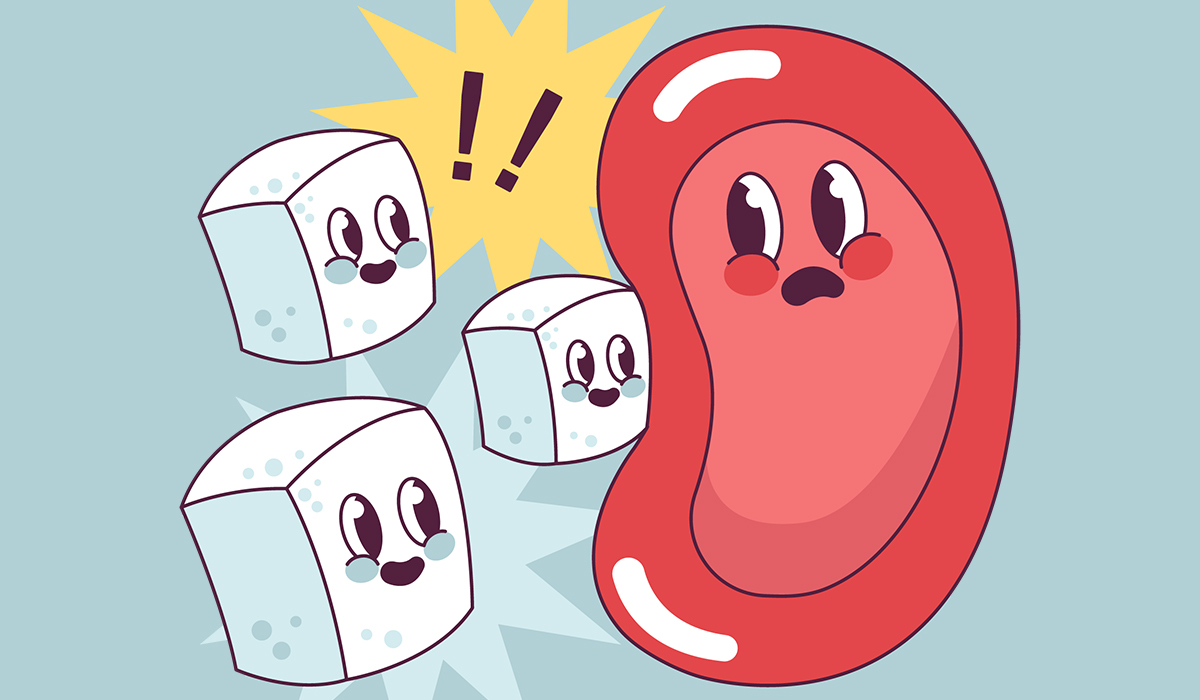
Prediabetes happens when the sum of sugar in your blood is higher than normal but not yet at the level… read more »
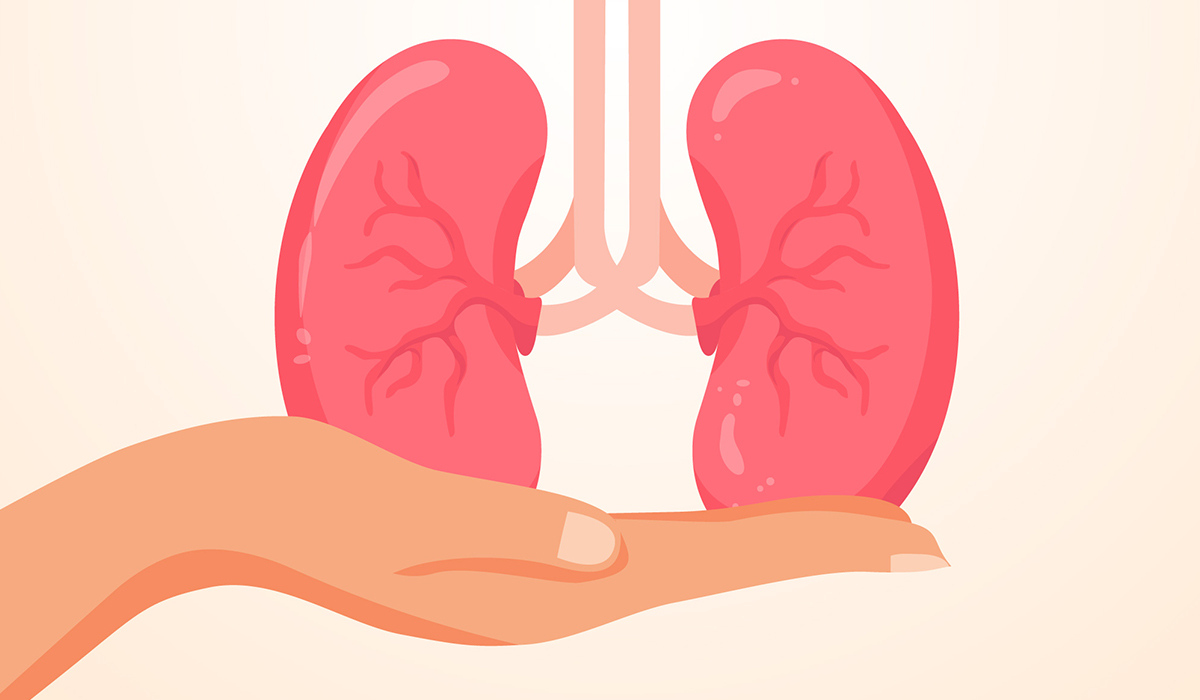
Kidneys are two bean-shaped organs that filter your blood from waste products. What are its other functions? How are they… read more »
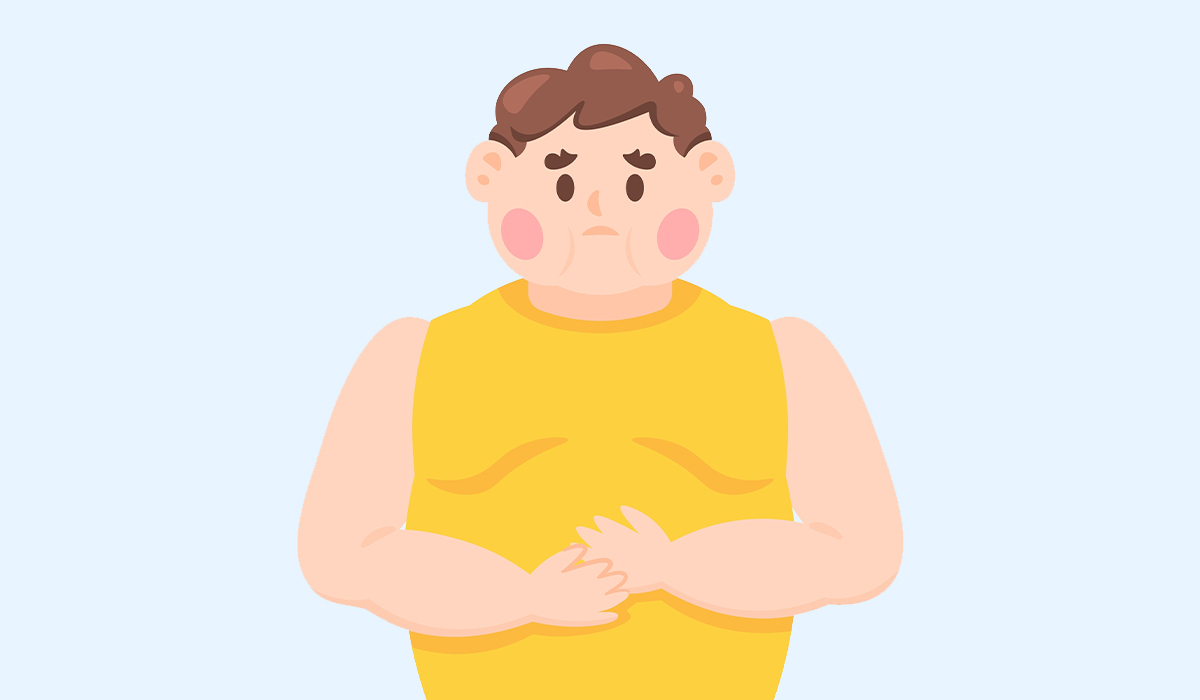
Cushing's syndrome is a set of symptoms caused by excess glucocorticoids in the body. What are the causes of the… read more »
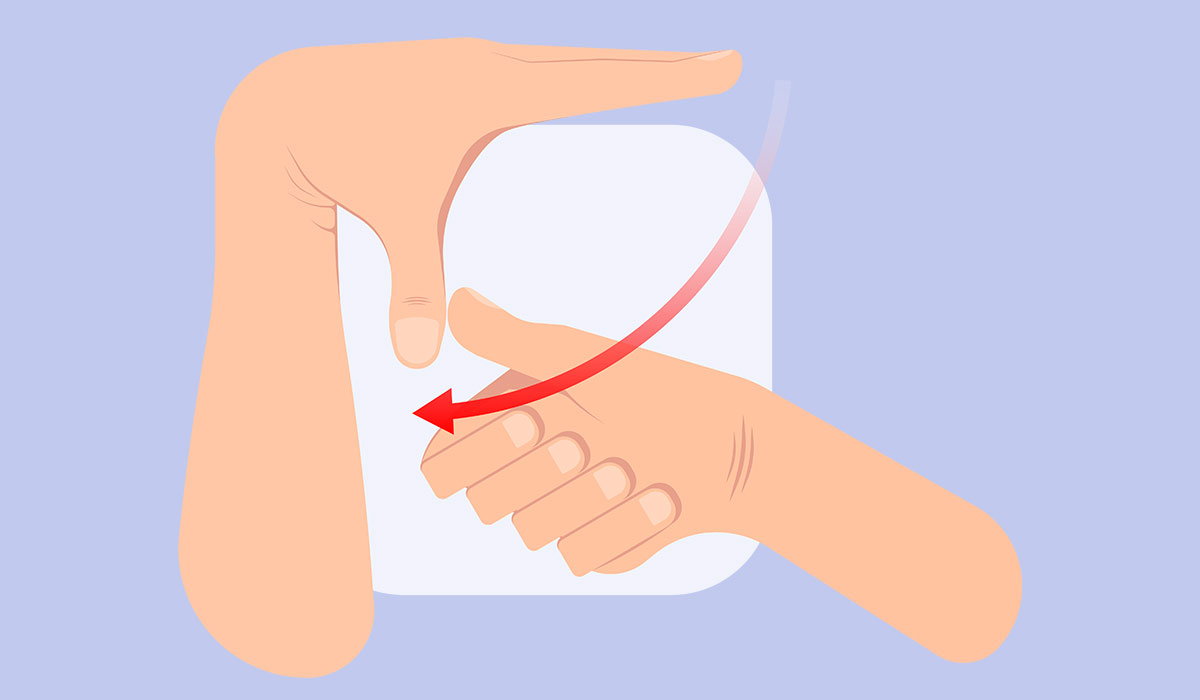
Ehlers-Danlos Syndrome is a group of diseases with a genetic basis. Learn all the symptoms associated with EDS. Find out… read more »
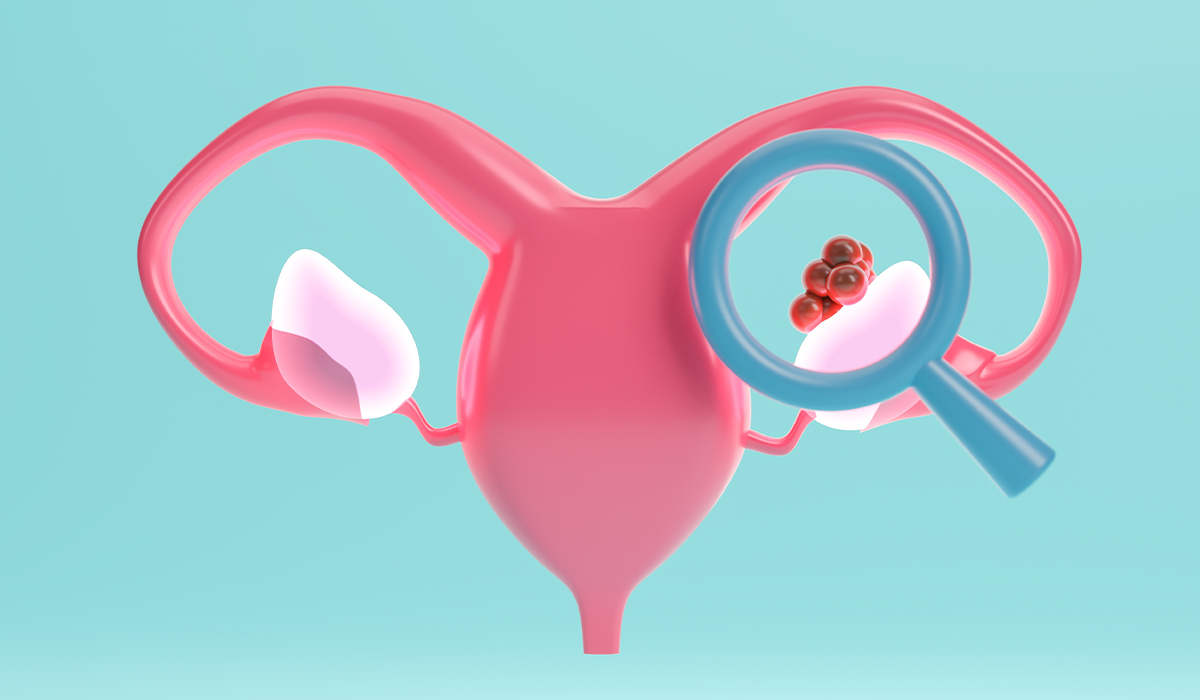
Ovarian cancer is a type of cancer that begins in the ovaries, which are part of the female reproductive system.… read more »

Premenstrual Syndrome (PMS) refers to a group of physical, emotional, and behavioral symptoms that occur in the one to two… read more »

The GOLO diet is designed to stimulate metabolism, increase energy levels and fat loss. How it's working? What should you… read more »